Friday, 9:00 am
I have some catching up to do. Sorry I haven’t had a chance to blog since Wednesday morning, but we’ve been on the go a lot and it’s been exhausting.
Today is our last day in Havana, and it’s a free day. Unfortunately, the weather has turned. It’s rainy and blustery. My plan for today was to visit the Almacenes San José Artisans’ Market and the National Museum of Fine Arts. The latter is actually housed in two buildings, one with an international collection and the one I want to visit, which is dedicated to Cuban art. I think that plan will still work, but more by taxi than on foot.
Tropicana
The show at the Tropicana was everything I could have imagined it would be. And more.
When we arrived the women were handed bright pink carnations and the men got a cigar. We then had the option to pay 5 CUCs (about $5 US) so we could take photos of the show. When the show started we got a bottle of rum (for each 4 people) and a small bowl of peanuts. Prior to that, food and drink was not included. I think we were intentionally brought to the show about an hour early so that we could spend a little money beforehand. (And possibly lining Felix’s pockets? That’s a very free-enterprisey perspective, but I’m not convinced it doesn’t exist here in Cuba. When he takes us to a restaurant for lunch or we make purchases from the cigar factory or other gift shops, it’s hard to believe he doesn’t benefit.)
Anyway, the show was an extravaganza of song, dance, and costumes that ranged from skimpy to elaborate to way over the top. Yes, in one of the numbers the women paraded around with chandeliers on their heads. The music was almost all Latin, heavy on the brass, except for the operatic number they threw in (“Libiamo” from Verdi’s La Traviata performed by six singers).
Hemingway and Martí
We started the day on Wednesday with a drive to Finca “La Vigía,” about 15 km outside Havana. On the way our bus blew a tire. But within 20 minutes, a new bus came and rescued us from the side of the highway.
Finca “La Vigía” was Ernest Hemingway’s home from 1939 until 1960, and today it’s a museum. It was fascinating to see how he lived.
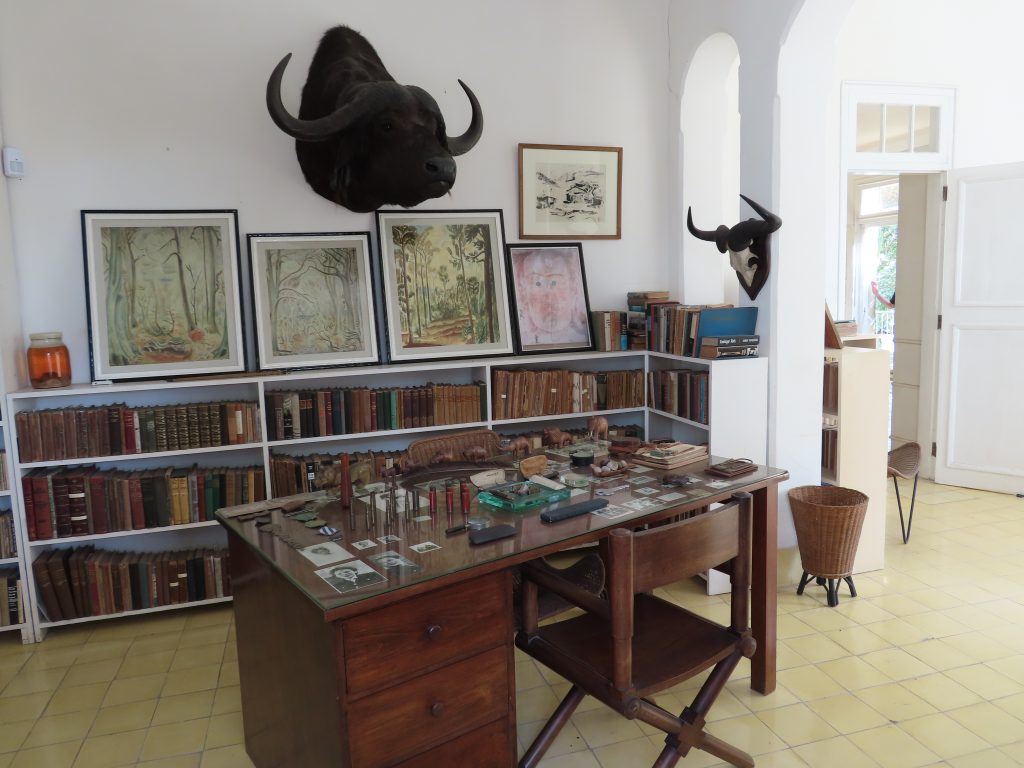
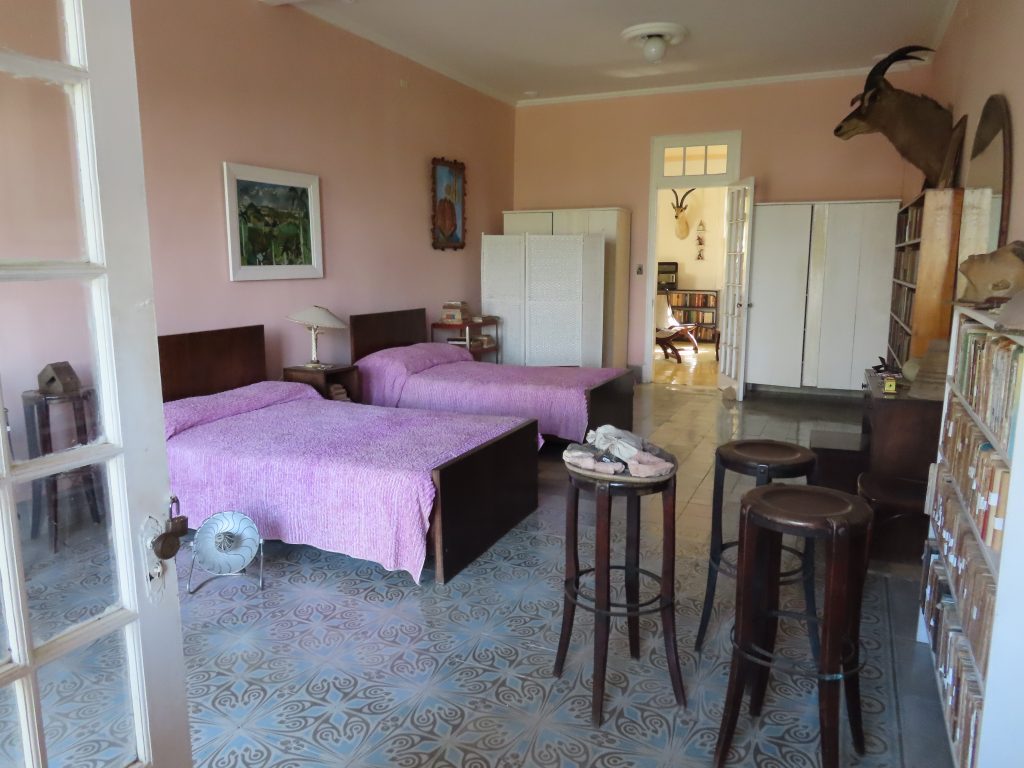
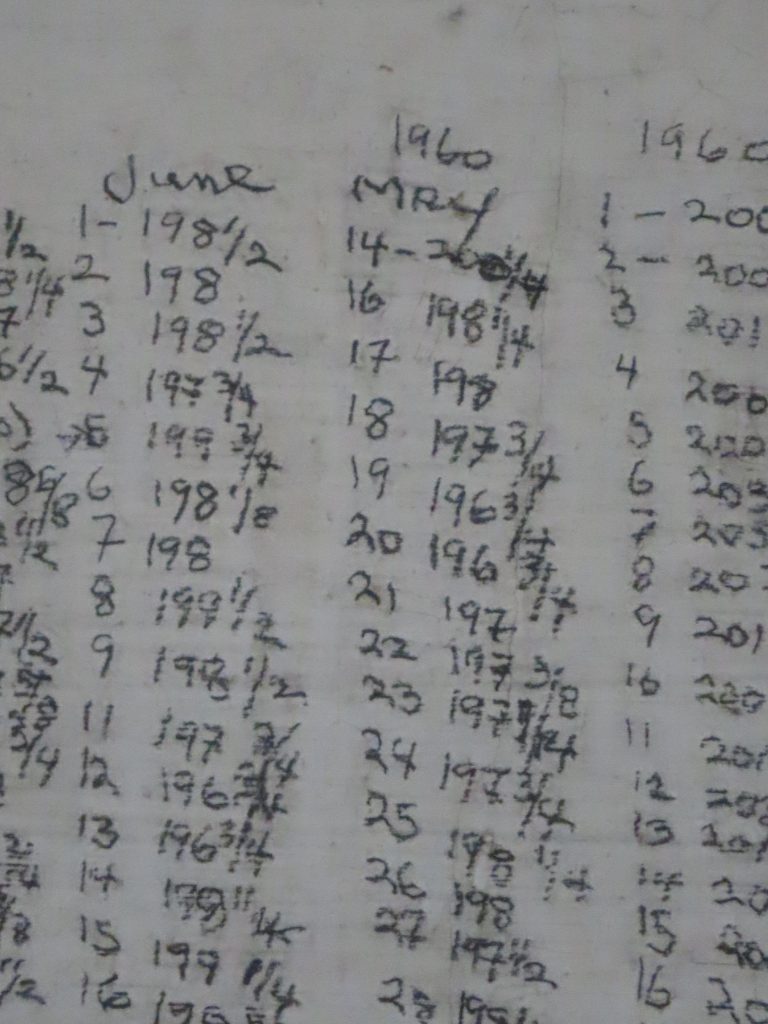
When Hemingway got sick, he started recording his weight daily on the bathroom wall.
From there we took a bus tour around an area of the city outside Old Havana. The oldest part of the city was surrounded by walls. As the population grew, the city expanded to the west, outside the walls.
Eventually we made our way to Plaza de la Revolución. In addition to the famous portrait of Che Guevara on the side of one building (and the less famous portrait of Camilo Cienguegos on another), here we visited the Jose Martí Memorial.
Jose Martí (1853–1895) was a poet, author, philosopher, and the hero of Cuban independence, beloved by all for his role in the liberation of Cuba from Spanish colonial rule. He was killed in battle and is considered a martyr. In addition to this big Memorial, smaller monuments, busts and the like, can be found all over.
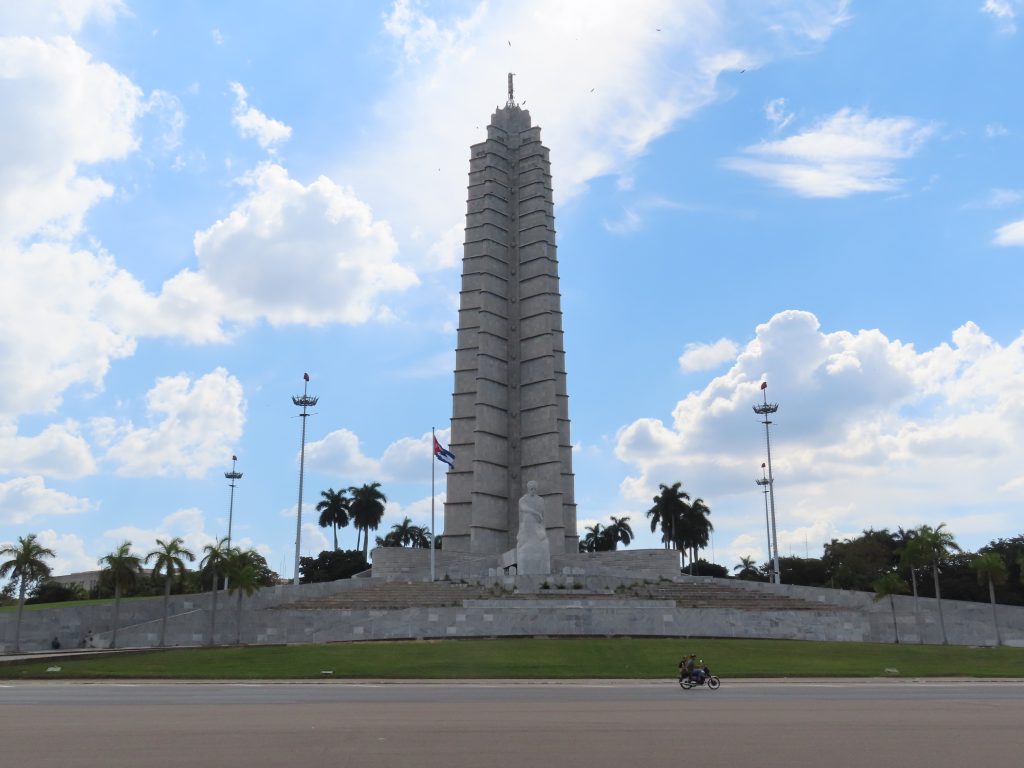

Cannon
We had time for naps and relaxing before our evening activity on Wednesday, the cannon ceremony at Castillo de San Carlos de la Cabaña, just on the other side of the canal.
Historically, a cannon shot at 9:00 pm every night signaled the populace that the gates to the city were closing. Today it is a strictly ceremonial event, widely attended by tourists who get many opportunities to buy souvenirs. The whole thing was kind of schlocky but also charming, and at exactly 9:00 the cannon fired with a big boom and everyone dispersed, much like the end of the 4th of July fireworks shows I attended as a kid.
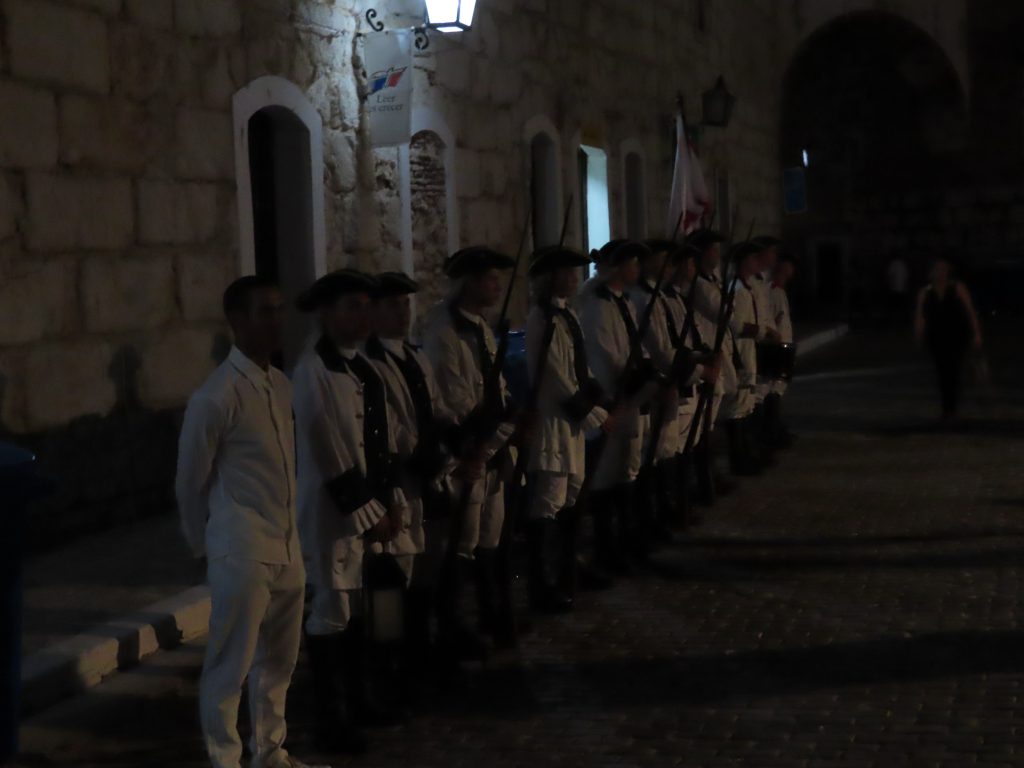
The best part of the whole thing was the view of the city of Havana all lit up at night.
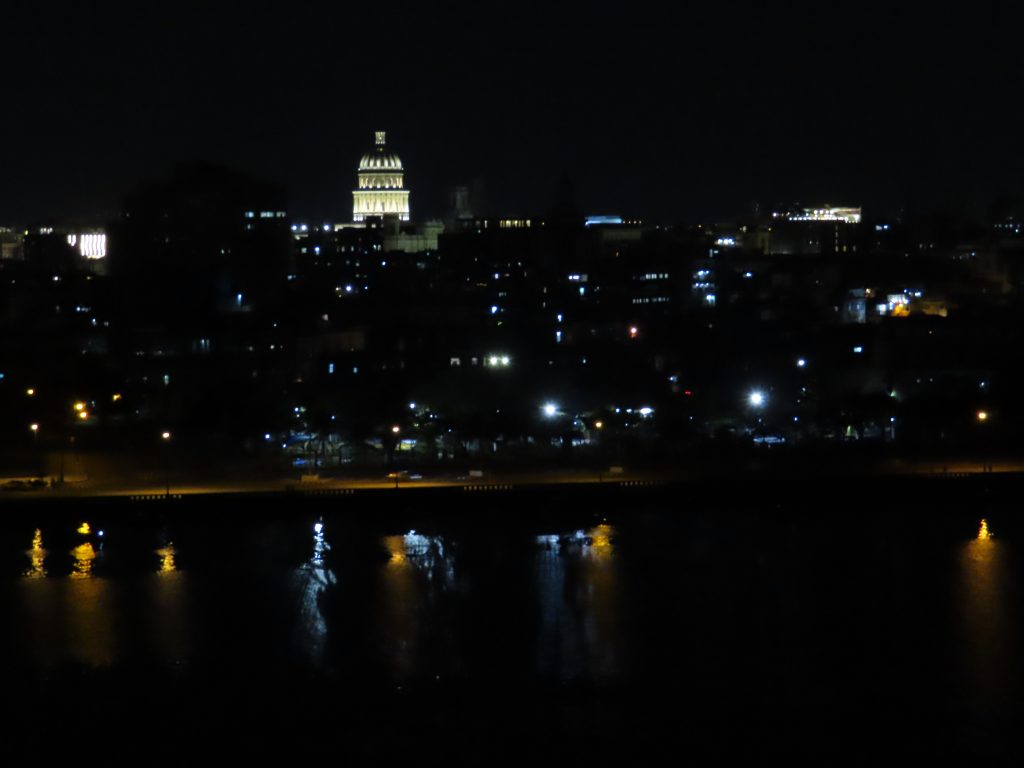
I’ll pick up later with yesterday’s and today’s adventures.
Third Impressions
- There is very little traffic here. I’m guessing not much of the populace can afford to own a car.
- There are so many indications all over the city of the former wealth and glory that Cuba enjoyed during the economic boom of the 1920s-50s. So much of that now is decayed. Gorgeous houses, mansions really, in dire need of renovation, are everywhere.
- There is also a fair amount of foreign investment that is bringing some revitalization to the city. New modern hotels are popping up and many of the older homes have been refurbished.


Mary
Sounds like a very interesting trip, so many cultural differences.
Sheila Bartle
Do you have an opinion/judgment regarding Castro and his government?
Lane
Mary and Sheila, thanks for your comments!
An opinion about Castro and his government… that’s a difficult question to answer. I haven’t read nearly enough about the Castros and their cohorts to be sure I understand everything about what happened in the years leading up to the revolution and the years since. But here are some general thoughts.
1. The involvement of the United States in Cuba in the first six decades of the twentieth century was not good for Cuba. Everything the US did was in its own interest, at the expense of the Cuban people. They propped up Batista, who essentially gave the US control over the sugar industry and aligned himself with the American Mafia. Criminals and big businesses (which often overlapped) prospered, and the broader Cuban economy was a mess. It’s no wonder there was a revolution like the one led by Fidel Castro.
2. I think Fidel started out with good intentions, to bring freedom to the Cuban people. I also think that he gravitated toward Communism after the overthrow of Batista’s government, because there was, justifiably, a great deal of resentment toward the US, and the Soviet Union was offering support. And I got the sense that Che Guevara developed increasingly fervent Marxist/Leninist political and philosophical leanings, and his influence was significant in bringing Fidel and Raúl into the Soviet camp.
3. Fidel was in power a very long time, and his views didn’t evolve. After thirty years of being propped up by the Soviet Union, he suddenly found himself on his own, and he was either unable or unwilling to bring about economic or social reforms that might have led to some improvements in market conditions and individual liberties. Neither did his long-held animosity toward the US ease.
4. Since Fidel died, Raúl has been first secretary of the Communist Party, which is still the most powerful position in the Cuban government. But he is no longer the president of Cuba; that position is held by Miguel Diaz-Canel, who will supposedly also take over Raúl’s position next year. When that happens, perhaps change will come. There are already some signs of change, some partnerships with other countries in the energy and tourism sectors. But the thawing of relations with the US, which began under Obama, has stalled and been reversed in the last few years for obvious reasons. Perhaps a President Biden or President Sanders will help bring about much-needed change for the Cuban people.